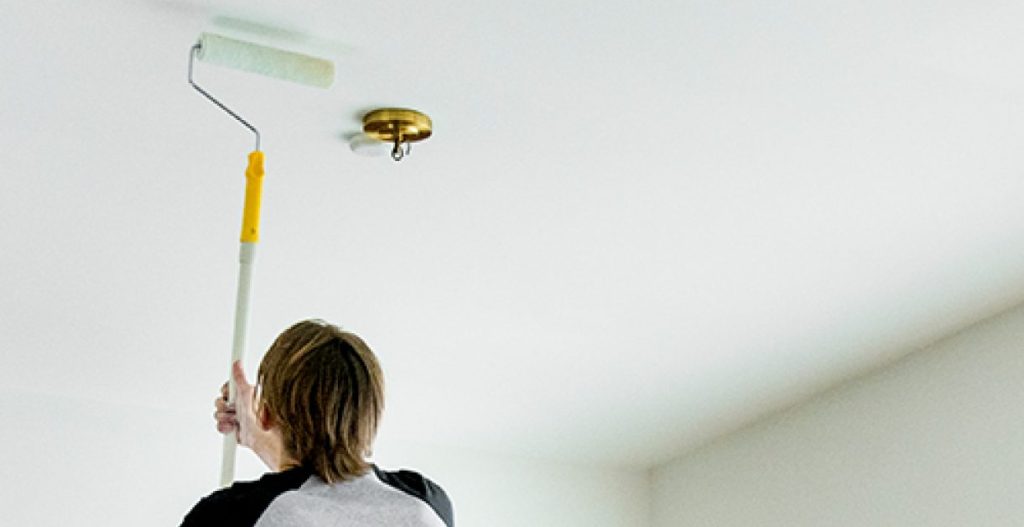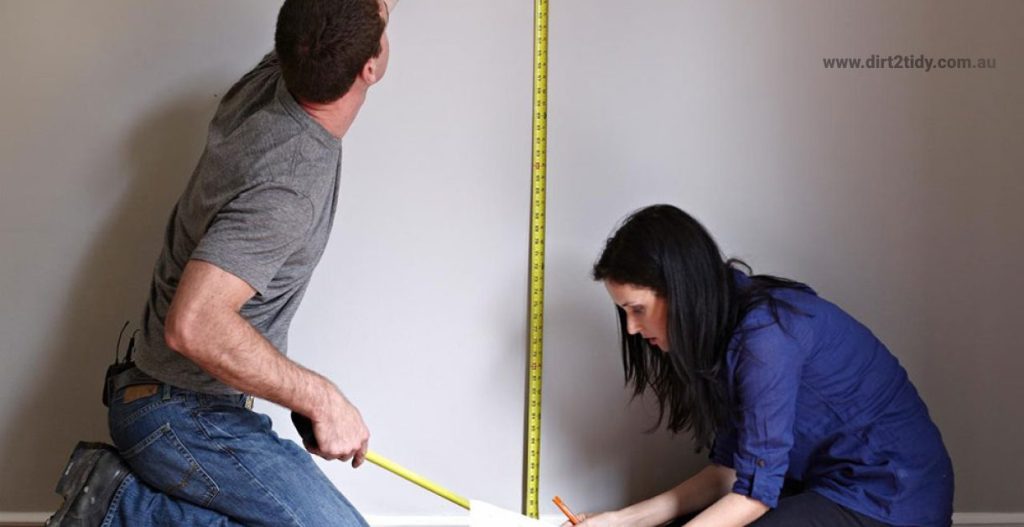
Every year in Australia, individuals spend more than $6,000 on house construction upgrades. These might be small decorating modifications or major landscape upgrades like changing the floors from wood flooring to tiled flooring or painting the baseboards and whole property.
Installing new finished flooring and repainting your house is an excellent method to refresh its appeal. However, if you’ve just installed new flooring, the last thing you want to do is destroy them. Oil-based paint spills removal may cause irrevocable damage to wood, tiles, and carpets in newly finished floors.
So, which should you do first, installing flooring or repainting your home? Knowing how to handle these activities in the correct sequence can reduce your chances of ruining your new flooring or paint work. Continue reading to learn how to approach house renovating.
First, complete any ceiling work
Home renovations may create a lot of debris. To minimise harm later, start with the most difficult tasks. It is critical to remove any dust and dirt before installing finishing touches such as new flooring or paints cover the nail holes, baseboards and trim.
If you’re planning to repaint a room or replace the floor, you should start with the ceiling and cover the floors. Working on the ceiling may cause a lot of dust and debris to fall to the ground. On the way down, this will strike the walls if they are freshly painted.
To ensure a clean and professional finish, begin by painting your ceiling before touching the walls. This prevents paint splatters on freshly painted surfaces. Here’s how to do it effectively:
- Cutting In: Use a 2 ½ inch angled brush to paint the edge of the ceiling along the perimeter of the entire room. This technique, known as ‘cutting in’, helps create clean lines and prevents overlap onto the walls.
- Rolling the Ceiling: With a ⅜” nap roller, paint the ceiling from one end to the other, maintaining consistent strokes. For the first coat, roll in one direction. If a second coat is necessary, roll in the opposite direction to ensure even coverage and reduce the risk of splatters.
By following these steps, you can achieve a neat and tidy finish while safeguarding your walls from unwanted paint marks.
This is why, if you’re planning to repaint a room or replace the floor, you should start with the ceiling and cover the floors. Working on the ceiling may cause a lot of dust and debris to fall to the ground. On the way down, this will strike the walls if they are freshly painted walls.
To reach the ceiling, you will also need to place ladders on your floors. The last thing you want is to leave ladder markings on your newly laid flooring or carpet.
The good news is that your ceiling is far away from any other repairs you’ll have to undertake. As a result, this should be the final area of the room you complete. You may then work your way back down from there.

Following that is the removal of old flooring and trim
Before you consider painting the walls or installing a new floor, you must first remove the old one. This is another dirty task that must be completed before painting to protect the floor.
Any thrown-up dust or debris might become lodged in a wet coat of paint job and destroy it. If you have repainted the ceiling of a room, allow it to cure before removing the flooring. You won’t destroy your work this way. If you are concerned about this occuring, you may always paint the ceiling afterwards.
This is also an excellent opportunity to remove the wall trim. You may then remove them for repainting or repair if necessary.
After you’ve put your new flooring, you’ll need to reinstall the trim around your walls. This should not be done before laying new flooring since it might cause gaps.
Before installing the flooring, prepare the walls
It’s a good idea to prepare your walls for painting before installing your new floor. This isn’t necessary, but it is a dirty task, and doing it before installing your new floor can save you a lot of time cleaning up.
Wall preparation may include:
- Washing the walls and trim: Start by cleaning your walls to remove any dust or residue that could clump when you paint. This step is crucial for ensuring a smooth paint application.
- Patching: Check your walls for any nail holes, dings, and dents. Fill them in with putty, let dry, and lightly sand to create an even surface.
- Taking down wallpaper: If you have wallpaper, remove it to prevent any texture issues when painting.
- Sanding: After patching, lightly sand the walls to ensure a flawless finish on your paintwork.
- Bridging the gap: If there are any gaps between molding and the wall, use caulk to fill them.
These steps not only help achieve a flawless finish but also keep your new floor clean, particularly if you’re adding carpet!
Final Preparations
Always apply a coat of primer over patched areas to ensure even paint coverage. Lastly, remember to remove the outlet and light switch covers to prevent any paint splatters on them.\
How to Select the Perfect Wall Color and Sheen for Your Space
Choosing the right wall color and finish can transform your room, but where do you start? Here’s a step-by-step guide to help you make the best decision.
Step 1: Narrow Down Your Color Choices
The sheer number of colors out there can be overwhelming. Start by identifying your top three color preferences. Visit a local paint retailer and request sample pots of these colors.
Step 2: Test in Your Space
Apply the samples on various walls within the room. Be sure to observe how they look throughout different times of the day. Natural and artificial lighting can alter the appearance of colors significantly.
Consider Lighting:
- Morning Light: How does the color look with morning sunlight?
- Afternoon Glow: Does the shade warm up or cool down in the late afternoon?
- Evening Ambiance: How does it fare under your room’s current lighting fixtures?
Step 3: Choose the Right Sheen
Your choice of finish will depend largely on the room’s function.
- Bathrooms and Kitchens:
- Opt for a semi-gloss finish. It’s durable and resistant, making it easy to wipe clean.
- Bedrooms and Living Areas:
- A satin finish offers a subtle sheen and flexibility, adapting well to these types of spaces.
- Trim, Cabinets, and Doors:
- High gloss is ideal here, providing a sleek, polished appearance and great durability.
Pro Tip:
No two rooms are the same. Take the time to see how potential colors play with your unique space and decor.
Use these guidelines to confidently choose the right paint colors and finishes, turning your room into the haven you’ve envisioned.
Laydown Flooring
You are now ready to put the flooring in your house after you have prepared the walls. This should be done prior to painting any of the walls for all type of flooring. You won’t have to repaint regions if you do any damage when installing the flooring.
This is particularly critical if you’re putting up hardwood flooring. You don’t want dust or floor stainer ruining your newly painted walls if your hardwood needs sanding or staining.
After you’ve placed your flooring, you may notice that it’s a bit dusty. This is typical, so don’t spend time cleaning it up before painting the walls. You may have to clean it up again after you’re done!
Once the flooring is in place, you might need to repair or reattach the trim. This ensures that the trim work aligns perfectly with the new flooring. Since you’ll need to paint over any screws, it’s best to reconnect the trim before painting.
Painting Trim After Walls Are Painted
1. Prep Work: Begin by wiping down all trim and baseboards with a damp rag. This removes dust and dirt, ensuring a clean surface for painting.
2. Use Painter’s Tape: Carefully apply painter’s tape around the trim and baseboards. This step is crucial to avoid getting paint on your floors or walls and ensures a crisp, clean paint line.
3. Choose the Right Tools: Use an angled trim brush for precise application. This type of brush is ideal for reaching corners and edges without overlapping onto the walls.
4. Apply the Paint: Start with the first coat of paint. Once it’s completely dry, apply a second coat to ensure even coverage.
5. Timing for Tape Removal: Wait until the paint is mostly dry, but not fully set, before removing the tape. This helps prevent peeling or damaging the new paint job.
By following these steps, you can achieve a professional-looking finish that complements your new flooring.
After you’ve installed the new flooring, you may repair or reattach the trim surrounding it. This is the greatest technique to guarantee that the trim work precisely matches the new flooring. Because you will have to point over any screws, you should reconnect the trim before painting.

Before painting the walls, mask the floors
Painting walls after installing a new floor may be nerve-racking. After all, you don’t want to taint it with paint.
Fortunately, there are several excellent methods for protecting your new flooring from paint damage. Masking your floor entails carefully covering it with plastic or linen. This is then taped to the trim to prevent paint from splattering on the floor.
Paint Trim First for Efficiency
When it comes to painting a room, the sequence of tasks can make a significant difference. Start by painting the trim first. This approach simplifies the process because taping off trim is much easier and faster than taping off walls. Plus, if any paint lands on the ceiling or walls during this step, it will be covered later.
After the trim, move on to the ceilings. This order ensures a clean finish without the hassle of retouching. Finally, tackle the walls. This method saves time and energy, allowing you to focus on achieving a smooth finish where it truly matters. Remember to let the trim dry for a full 24 hours before moving to the next step.
By following this sequence, you ensure a professional-looking result while maintaining the integrity of your new floors.
If you’re worried about painting your walls over new flooring, it’s a smart idea to get expert assistance.
They will be used to this kind of job and will understand how to safeguard your flooring from paint damage. In fact, more pros see this as a finishing touch and would never contemplate doing it before laying a floor!
Tips for Achieving a Cohesive Wall Finish
Painting walls for a smooth and unified look involves a few insider tricks that can make a noticeable difference in your results. Here’s how to ensure your work looks polished and professional:
- Match Roller and Brush Textures: When painting near trims or corners, use a paintbrush for precision. However, brushed sections can have a different texture than rolled areas. To harmonize these textures, quickly roll over the brushed paint with a small roller (about 3 inches wide) while it’s still wet. Ensure both the nap and thickness of your rollers match to maintain consistency.
- Avoid Lap Marks: Lap marks can disrupt the smooth appearance of painted walls. These marks occur when you paint over areas that have started to dry. To prevent them, maintain a wet edge as you work. Instead of using a “W” pattern, overlap each roller stroke with the previous one and cover the full wall height in a single pass. For large areas like ceilings, feather out the edges to minimize overlapping, which helps in reducing these marks.
- Section-by-Section Painting: Tackle the wall in sections, ensuring each part is finished before moving to the next. This ensures uniformity and helps in not missing any spots.
- Consistency is Key: Use the same type of roller nap throughout your project to keep a consistent texture. A nap that’s too thick or thin can change the paint’s appearance on different sections.
- Quality Tools and Paint: Invest in high-quality brushes, rollers, and paint. They may cost more initially, but the finish and ease of application are worth it.
By following these steps, you’ll achieve a more cohesive and professional finish on your painted walls, saving time and effort in the long run.
Prepare Yourself for Efficient Home Remodeling
If you want to redesign and instal flooring in your house, you must do it in the correct sequence.
You should finish the nasty work first, then move on to the finishing touches. Preparing the walls and removing the old flooring are also part of the process. Then, instal your new flooring, and the last item on your to-do list should be painting!





